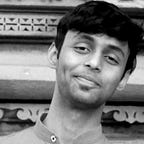Who was Karl Friedrich Schinkel, and why is he famous?
As I mentioned earlier, Karl Friedrich Schinkel was an interesting man.
If at any point this feels like I am infatuated and obsessing over him, that’s because I am. And by the time you are done reading this, you will be too.
Schinkel was born in a Germany that was shaped by David and Friedrich Gilly and Karl Gotthard Langhans. They were inspired by the French revolutionaries and thinkers. Friedrich Gilly looked up to Ledoux, while Gotthard was greatly influenced by the works of Durand (previous article). The Langhans Brandenburg Gate stands as a testimony of the influence of French ideals and architecture in redefining that of Germany. Together, Langhans and the Gillys shaped the architectural taste of Prussia and its nationalism. It also shaped the career of one of its brightest architects- Karl Friedrich Schinkel.
In the early 19th Century, Schinkel toured Rome and Sicily to understand the art and architecture of ancient and antiquity. Later, in Berlin, he started as a painter and continued at it for a few years. After attending the Berlin Art Exhibition in 1810, he accepted that he would not be able to reach such mastery in painting. As an alternative, he started looking for work in other fields and turned to architecture. A few years later, he got the chance to design the backdrop for Wolfang Amadeus Mozart’s (the Mozart) opera The Magic Flute. His star-spangled design was widely acclaimed and is used by productions even to this day.
The King of Prussia commissioned Schinkel to construct Neue Wache, the new guardhouse for the Royal Palace. This was Schinkel’s first major architectural commission in Berlin. The building is primarily plain, with a Doric portico and four massive risalits, where two wings meet at right-angles, at its four corners. The statuary in the tympanum stands as a reminder of the role of Prussia in the Napoleonic Wars.
Napoleon was defeated in 1818, and the Prussian Republic State establish. Schinkel was chosen to oversee the Prussian Building Commission. The ideals of the Revolution had made their way into the minds of the Prussians, but there was no space for the French. Berlin needed a change, a different language to celebrate its freedom. This tension had Schinkel turning to the Greek Revival style.
In the past, Schinkel’s work focused on rebuilding and reviving the damaged heritage of Berlin. These include some notable works of Gilly and Langhans. He redesigned the Brandenburg Gate quadriga after it returned from Paris. The sculpture features Nike, the goddess of victory, accompanied by the Prussian Eagle, holding an Iron Cross with a wreath of old leaves. Around the same time, Schinkel designed the concert hall Schauspielhaus. Now known as the Konzerthausorchester, the structure was a replacement to Langhans’ National Theater that was destroyed by a fire. Today, the structure is revered as a treasure of German Neoclassical Architecture.
A proponent of the Greek style, Schinkel provided Germany with an escape from the Imperial Roman architecture that was characteristic of the French. Political idealism and military prowess demanded by classical elements influenced his work. For him, a building was supposed to contain the elements of ‘the poetic and the past.’
Schinkel designed the Royal Museum, the first museum in Berlin, known as the Altes Museum. The structure made art accessible for a comprehensive cultural education of the country. The simple yet grand structure is surrounded by an entablature of the Ionic order. The building, an icon in itself, is counted amongst the most distinguished buildings in neo-classicism.
In the third decade of the century, new ideologies and materials were being explored. The use of steel and glass in construction had a direct impact on the German Industrial Revolution, like the world. With the rise of the Bourgeoise propagating Republican ideals of education and equality, the world was changing. Classicism could no longer contain and reflect the change and ideas of freedom and exploration. This is one of the reasons Schinkel employed the romanticism of Gothic architecture. Elaborating on the delicacy and power of spatial articulation, he successfully reflects on the contemporary ideals of the triumphant Prussian nationalism.
When the Upper Building Department at the Academy of Fine Arts and Mechanical Sciences decided to establish an entirely new educational building, Schinkel was commissioned. It is called Bauakademie; Schinkel’s Bauakademie, featuring extensive use of red brick in ways that were not common at the time. Even the façade of the building was streamlined a little excessively (when compared to other contemporary structures). This piece of architecture is considered the forerunner of modern architecture.
Unfortunately for Berlin and the rest of the world, Schinkel died a few years after completing Bauakademie.
Through his works, Schinkel shaped the city of Berlin. As reflected in the guard house and the theatre, his mature style became the character of the city’s architecture for many successive decades and continues till today. Through his ideals and work, he propagated Durand’s dictum of utility as the fundamental principle of all architecture.
Do you think this is where form started following function?
About the Writer
Pranjal Maheshwari is an undergraduate architecture student at the School of Planning and Architecture (SPA), Bhopal. He has interned at Rethinking The Future (RTF), India Lost and Found (ILF) by Amit Pasricha, and Sandal Kapoor Associates.
About the Editor
Falak Vora is an architect, architectural historian, writer and essayist. She is a graduate of the Bartlett School of Architecture, University College London (UCL), UK and Sarvajanik College of Engineering and Technology (VNSGU), Surat. She has experience working at Aangan Architects, Eternity Architects, Wall Space Architects, Studio i!, Guallart Architects and The Universidad Politécnica de Cartagena (UPCT).
About the Illustrator
Itika Atri is an undergraduate architecture student at the Deenbandhu Chhotu Ram University of Science and Technology (DCRUST), Murthal (Sonepat). She is a writer, illustrator and graphic designer. She has experience working as an Architectural Journalism Intern at Rethinking The Future (RTF).
